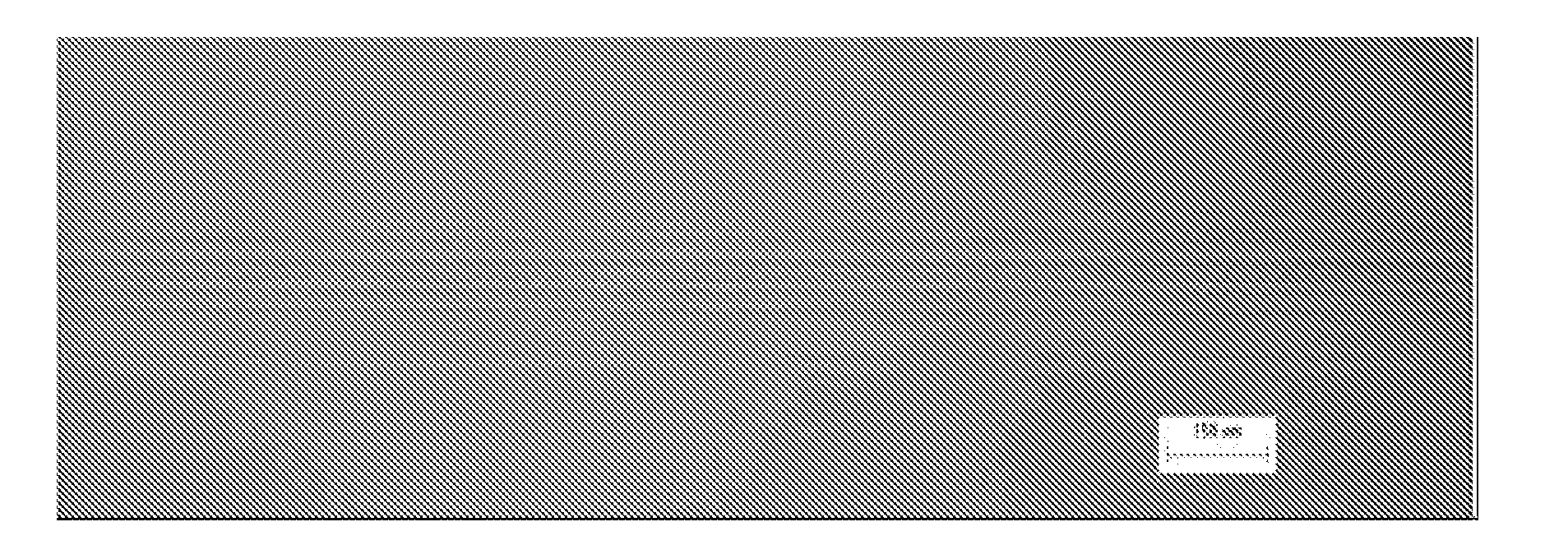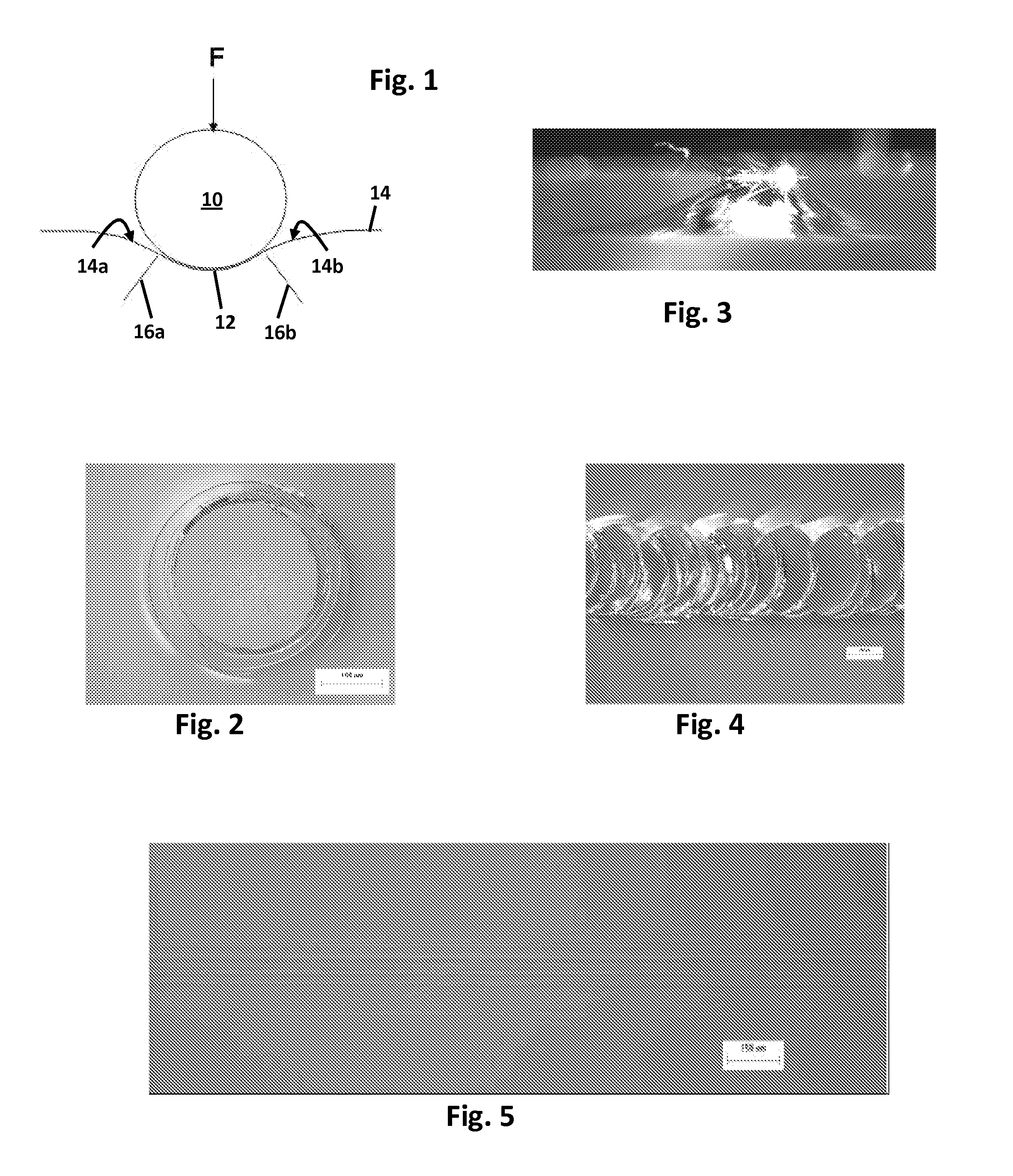Glass with high frictive damage resistance
a glass and frictive technology, applied in the field of glass articles and surface treatments, can solve the problems of tempered glasses remaining susceptible to such damage, significantly degrading the strength of glass, and glass surfaces that are not provided with some form of surface protection, and achieves enhanced initial strength, good resistance to strength deterioration, and enhanced strength.
- Summary
- Abstract
- Description
- Claims
- Application Information
AI Technical Summary
Benefits of technology
Problems solved by technology
Method used
Image
Examples
example 1
Finished Aluminosilicate Glass Sheet
[0036]A freshly drawn glass sheet of Corning Code 2318 aluminosilicate glass having a thickness of about 1.0 mm is selected for treatment. The surfaces of the sheet are first contacted with an ion-exchange strengthening bath comprising a source of potassium ions that are of larger ionic diameter than the sodium ions present in the surface of the glass as drawn. The surface of the glass sheet is contacted with this bath at a temperature below the strain point of the glass for a time at least sufficient to develop compressive surface layers on the glass sheet that have a depth of about 30 μm and a peak compressive stress level somewhat in excess of 500 MPa.
[0037]Following ion-exchange strengthening as above described, the surfaces of the glass sheet are contacted with an etching medium comprising an acidic solution containing a fluoride compound. The etching medium employed is an aqueous solution consisting of 5 vol. % HF (48%) and 5 vol. % H2SO4 (9...
example 2
Amphiphobic Coating on Etched Glass
[0043]A pristine fusion-drawn sheet of Corning Code 1317 alkali aluminosilicate glass having a thickness of about 0.3 mm is subjected to an ion-exchange strengthening treatment to develop surface compression layers on the opposing surfaces of the sheet. The treatment effects an exchange of K ions from an ion-exchange strengthening bath for Na ions from the glass while the glass is immersed in the bath at a temperature below the glass strain point. Immersion is continued for a time sufficient to develop surface compression layers about 50 μm in thickness and a level of compressive surface stress in excess of 200 MPa on each of the opposing surfaces of the sheet. The sheet is then removed from the bath and washed.
[0044]The glass sheet is next immersed in a glass etching medium to remove layers of glass from the opposing surfaces of the sheet as described in Example 1 above. The etching medium employed is an aqueous solution consisting of 5 vol. % HF ...
PUM
| Property | Measurement | Unit |
|---|---|---|
| Length | aaaaa | aaaaa |
| Thickness | aaaaa | aaaaa |
| Thickness | aaaaa | aaaaa |
Abstract
Description
Claims
Application Information
 Login to View More
Login to View More - R&D
- Intellectual Property
- Life Sciences
- Materials
- Tech Scout
- Unparalleled Data Quality
- Higher Quality Content
- 60% Fewer Hallucinations
Browse by: Latest US Patents, China's latest patents, Technical Efficacy Thesaurus, Application Domain, Technology Topic, Popular Technical Reports.
© 2025 PatSnap. All rights reserved.Legal|Privacy policy|Modern Slavery Act Transparency Statement|Sitemap|About US| Contact US: help@patsnap.com


